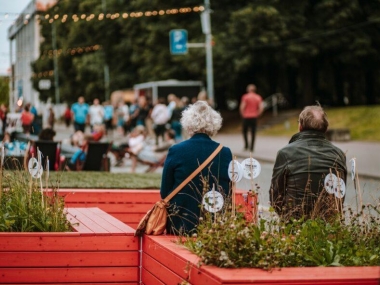Street Greening for Health and Wellbeing Outcomes
Edited on
16 May 2022
Read time: 1 minute
In European cities, streets occupy on an average 25-35% of the urban space. This means that a large amount of public space is dedicated to cars. A city is a complex ecosystem, and each part of the system has a function: streets are supposed to be used to move goods and humans. But can they also have other functions?

Download our Street Greening for Health and Wellbeing Outcomes report by URBACT ad-hoc expert Lucia Vecchy and Health & Greenspace Lead expert Tamás Kállay
Table of contents:
- Intro: What is a green street?
- Macro scale to urban scale: Ecological connectivity and green infrastructure
- Benefits of green streets
- Greening streets for improved health and wellbeing outcomes
- Design considerations
- Green verges and swales
- Trees and hedges
- Green façades and green roofs
- Permeable pavement
- Identification of priority areas for street greening
- Species selection
- Planning for maintenance
- Accommodating utilities during of green infrastructure
- Green infrastructure contributing to healthy street design
- Tactical urbanism and placemaking to enhance social wellbeing and community cohesion
- Planning for walkability and bikeability
- References
 Submitted by Viktoria Soos on
Submitted by Viktoria Soos on
